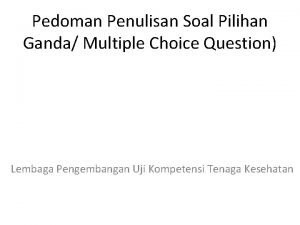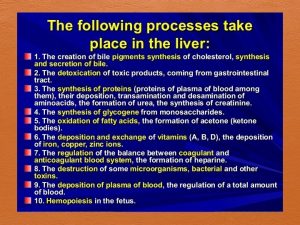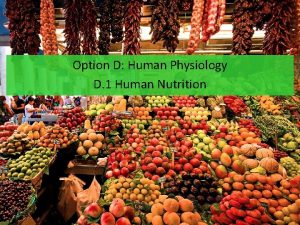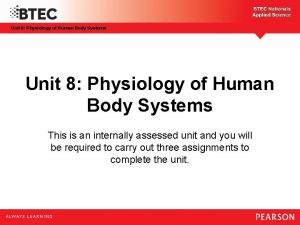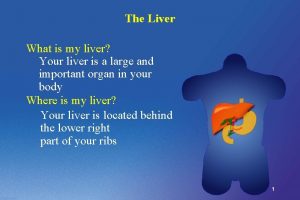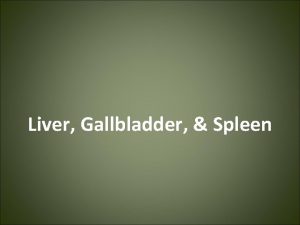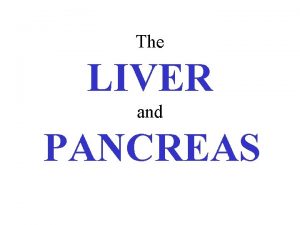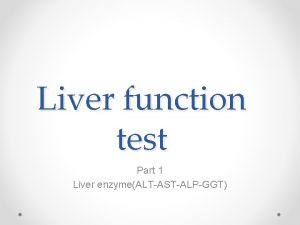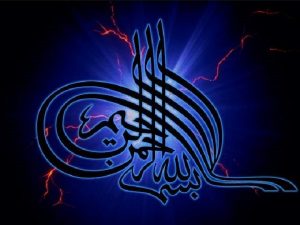The Liver Human Physiology Option H Paper 3










- Slides: 10

The Liver Human Physiology Option H / Paper 3

Structure of the Liver • Blood Supply – Hepatic Artery – Hepatic Portal Vein – Hepatic Vein (to vena cava)

Structure of the Liver • Gall Bladder – Connects to small intestine, through duct joined to the pancreas, called the ampulla of Vater • Each lobe, is made of functional units called acini – Each unit is made up of hepatocytes, and kupfer cells, that line the sinusoids, and join to the central vein, along with veins, arteries and bile ducts

Acinus

Sinusoid

Bile • Bile is a yellow, brownish or olive green liquid, with a p. H of 7. 6 – 8. 6. • Bile contains water, bile salts, bile pigments, inorganic salts and cholesterol. Bile is produced by the hepatocytes and travels via the bile canaliculi to the bile duct, which empties into the gall bladder. When the duct to the duodenum closes, the bile is pushed back and stored in the Gall Bladder. • Bile salts are derivatives of cholesterol and sodium and potassium. • The salts have a hydrophobic side and a hydrophilic side This emulsifies the fat • Bicarbonate (HCO 3 -) in the bile, helps neutralize the acid of the stomach as the food enters into the duodenum.

Bile • The principle bile pigment is bilirubin. • The yellow, brown bilirubin is released into the small intestine and is broken down. • The action of bacteria breaks it down to urobilinogen, which give feces its normal brown color.

Secretion of Bile • Bile secretion is stimulated by both nervous and hormonal factors. • When acid chyme come in contact with the wall of the duodenum, it will secrete a hormone CCK (cholecystokinin) causing the wall of the gall bladder to contract, and a relaxing of the spincter of the ampulla of Vater.

Functions of the Liver • Carbohydrate Storage • Storage of Iron / Breakdown of Erythrocytes • Storage of Retinol and Calciferol • Protein Metabolism • Lipid Metabolism • Detoxification

Damage to the Liver • Excessive alcohol consumption can lead to: – Cirrhosis – Fat accumulation around the liver – Inflammation • Jaundice – Build up of bilirubin
